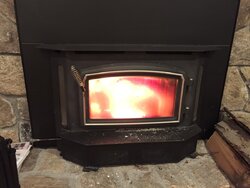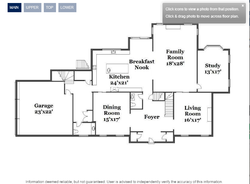Hey all. Just moved into a house that came with a Regency fireplace insert, that is approximately 5-6 years old. Tried searching the forum for answers but thought I would post my question here as didn't see the answers and see if my technique is sound thus far. For reference I have either a H2100 or I3100L regency model.
- When I heat in the morning or first fire, will load up 2-3 logs and make sure to burn with the draft fully open for 20 mins and the blower off
- After 20-25 mins will turn the blower on and put the draft a little less than fully in to slow the burning (and because the manual said to not use the blower with the draft fully pushed in). Question, why do you not want to run the blow with the draft control fully in?
- I wait until the logs are close to fully burnt for the most part before loading up another 1-2 pieces, so I am just tossing them on the ember / coal bed
- I turn off the blower upon reload and open the draft fully for 10 mins, then bring it back to close to closed to slow the burn. After 20-25 mins I turn the blower back on. Question: why do I need to turn off the blower for 20-30 mins post reloading the insert? I also have the draft fully open for ~10 mins post reload as I read that helps with creosote not building up, is that correct?
- I repeat this all day, but before bed I will stack 4-5 pieces in the insert, same 10 mins on draft fully open, then wait and bring draft control close to closed and turn blower on
Would love any comments or thoughts on what I am doing and some insight into my questions since you guys seem like the experts. Also, cleaning wise, assume once a year chimney sweep should come in to clean things? How does that work with an insert though as do they need to take apart and resemble to clean? I intended to use daily, and only all day 2-3 times a week while I am home.
Thanks so much. Loving it so far.
Andre
- When I heat in the morning or first fire, will load up 2-3 logs and make sure to burn with the draft fully open for 20 mins and the blower off
- After 20-25 mins will turn the blower on and put the draft a little less than fully in to slow the burning (and because the manual said to not use the blower with the draft fully pushed in). Question, why do you not want to run the blow with the draft control fully in?
- I wait until the logs are close to fully burnt for the most part before loading up another 1-2 pieces, so I am just tossing them on the ember / coal bed
- I turn off the blower upon reload and open the draft fully for 10 mins, then bring it back to close to closed to slow the burn. After 20-25 mins I turn the blower back on. Question: why do I need to turn off the blower for 20-30 mins post reloading the insert? I also have the draft fully open for ~10 mins post reload as I read that helps with creosote not building up, is that correct?
- I repeat this all day, but before bed I will stack 4-5 pieces in the insert, same 10 mins on draft fully open, then wait and bring draft control close to closed and turn blower on
Would love any comments or thoughts on what I am doing and some insight into my questions since you guys seem like the experts. Also, cleaning wise, assume once a year chimney sweep should come in to clean things? How does that work with an insert though as do they need to take apart and resemble to clean? I intended to use daily, and only all day 2-3 times a week while I am home.
Thanks so much. Loving it so far.
Andre



 .
.